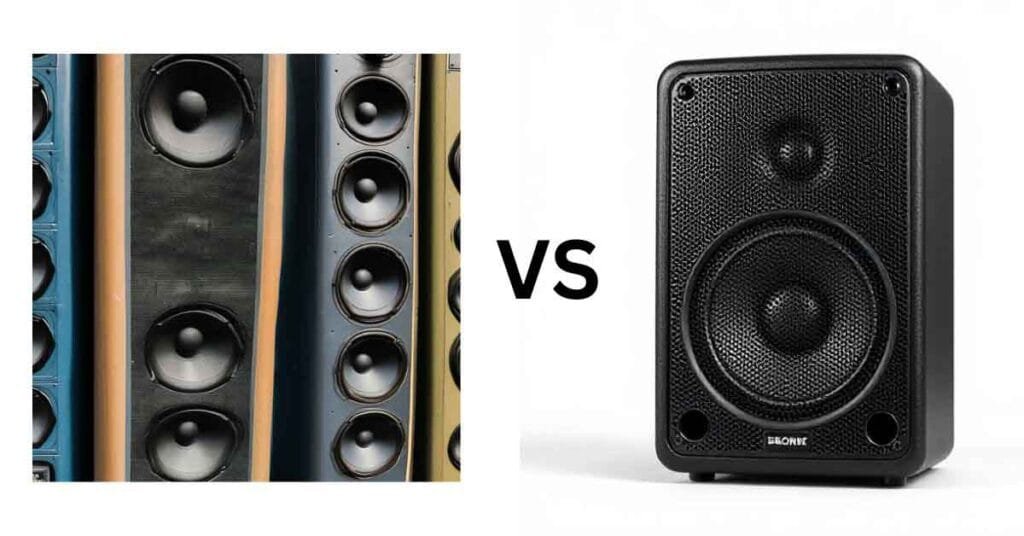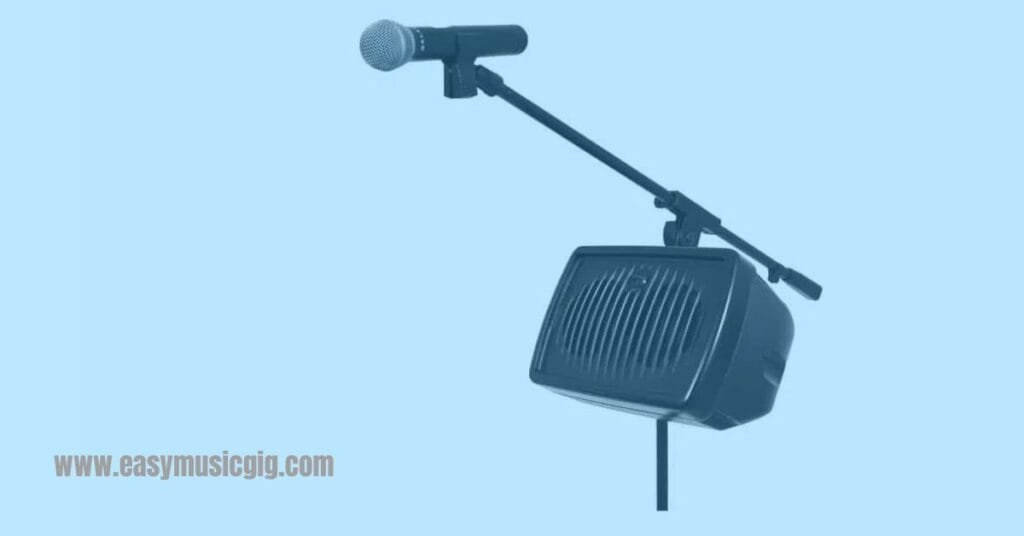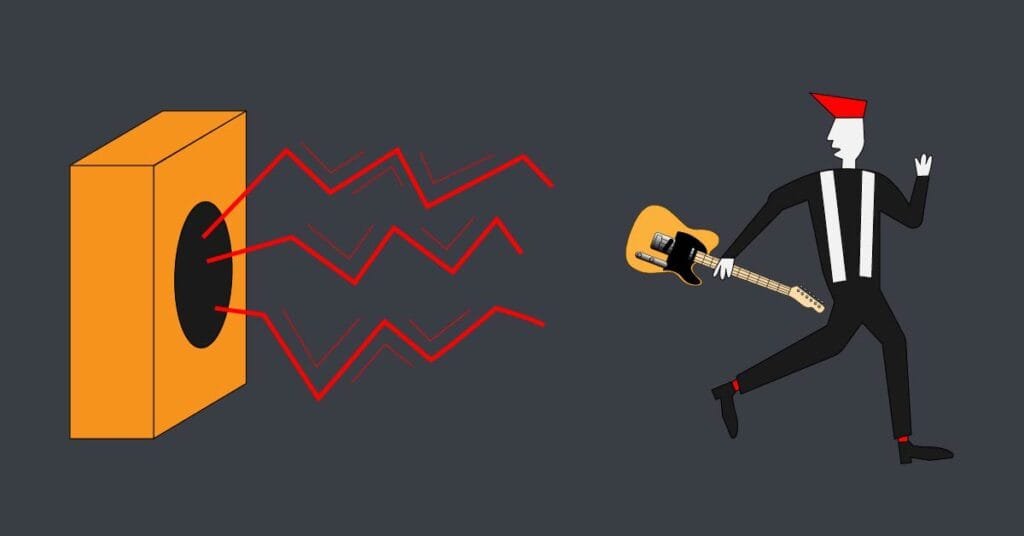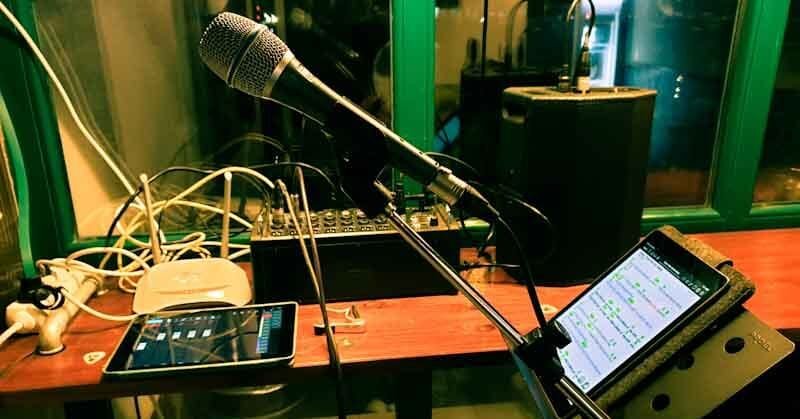Column PA vs standard PA speakers
As a musician who plays frequent gigs, you know that the sound system you use can make your show a success or a bad one. Today we will have a better look at the two main types of PA sound systems for small gigs: standard speakers and column speakers.
Whether you’re playing an outdoor event or a small cozy pub, you need to have the optimal type of sound system for your gig so that everyone is a winner. But which PA speaker type is best for which occasion and what are the main differences? Let’s have a deeper look.
What are column speaker PA systems?
They are called column speakers because of their tall and slender design which is characteristic of columns. Column speakers are also called line array speakers, but don’t get confused, they are not the typical line array speakers that get stacked one on another and are used for big productions.
The driver units (speakers) used in these housings are much smaller than in standard PA speakers. They are stacked vertically in one column. This form factor allows for a much more uniform sound dispersion across a wide area.
The column design is used to bring the speakers that produce high and mid frequencies to an optimal height for our ears, ensuring great clarity.
Advantages of a column PA system
- No monitor is needed due to almost no feedback. I say “almost” because you can experience some feedback but it is relatively easy to combat with column speakers.
- Consistent sound levels: Because of the vertical positioning of many smaller speakers, the sound is projected more consistently than with traditional speakers. Volume doesn’t get lost with distance like with point source speakers providing a uniform sound picture.
- Wide horizontal sound dispersion
- Less feedback
- Smaller size and weight
- Easy to set up
- Collapsable design: The column speaker box is either a 2-piece designed slim speaker or a 1-piece speaker mounted on a stand connected to the woofer.
- Easy to transport
- Pleasing aesthetics

What are standard speaker PA systems?
Standard PA speakers have a classic speaker design that features a more robust design with usually one or two woofers and a tweeter for high frequencies. These speakers are focused on providing high-output sound levels and a deeper bass response than column PA speakers.
Advantages of standard PA speakers
- Capable of producing high output levels and deep bass frequencies. In general, they are better at delivering a broader frequency response.
- Modular concept: They can easily be connected to multiple high-mid speakers in a daisy chain and with subwoofers using integrated or external crossovers creating custom PA systems. Sound engineers normally use this speaker type because of its adaptability to any genre of music and volume needed for an event.
- Versatility: Can be used for small and large concerts.
- Durable construction: Standard speakers have a boxed design and are usually built with materials that can outstand rugged everyday use in various environments and weather conditions.
Sound dispersion and quality comparison
Column speakers
Because of the vertical arrangement of the speakers, the sound dispersion is very wide. Some models like from the Bose L1 series have a horizontal dispersion of up to 180 degrees. Column speaker systems are associated with clarity, especially in the mid and high frequencies which makes them a perfect choice for speech applications where clarity is important.
Column PA speakers have a more Hifi sound compared to standard speakers which are also called point source speakers. This feature can make column speakers sound a bit compressed and too digital to some. On the other hand, they are a great choice for DJs and acoustic acts where low frequencies are not present.
Probably one of the most important benefits of using column speakers is reduced feedback. Since feedback is in most cases not a problem, musicians can have column speakers placed behind them, which eliminates the need for additional stage monitors.
Most Column speaker PA systems have a subwoofer as a base, but modular upgrading with additional subwoofers is possible for some products.
Standard PA speakers
Standard or classic PA speakers are good at delivering a broad frequency response, especially on the low end. Larger woofers produce deeper bass than column speakers, making point source speakers the best choice for bass-heavy genres like rock, metal, and hip-hop.
In general, standard PA speakers are a better choice whenever high sound levels and lower frequencies are needed, such as in large arenas and outdoor concerts. But since we are focusing on smaller gigs, a standard PA speaker system is better wherever there is a drum kit involved.
The placement of standard PA speakers is more important than that of column speakers due to their ability to produce feedback and different soundwave dispersion.
My experience
I have tried playing with column speakers, they are practical, and the sound dispersion is unbelievable. Also, clarity is almost like listening to a hi-fi system. But for the type of music I play with my band they’re not the ideal choice.
My band plays covers from the fifties and sixties where warm sound with no compression is what makes that music unique. Instead, we use standard PA speakers with a wooden enclosure which is more capable of capturing those timbres you get from acoustic musical instruments like drums, double bass, and hollow-body electric guitar.
But when I play acoustic gigs by myself or in a duo a column speaker PA system can be a better choice. The portability and easy setup is a big plus and I would recommend them to anyone who wants to simplify their gigging.
Setup and portability
Column speakers
Public address systems are the biggest and heaviest piece of gear that musicians use for gigs. Because of this, portability is crucial for small and frequent gigs. Column PA speakers are lightweight and can easily fit into any car. Their big advantage is that they consist of 3 or 4 pieces so they can fit practically anywhere.
Column speaker PAs also have integrated amplifiers and a 2 or 3-channel mixer already built-in which makes them very easy to set up since all the components of a small PA (speakers, amps, mixer, connections, effects,…) are there. Also, let’s not forget to say that no cables are needed to set up most column PA systems.
Standard PA speakers
Normal speakers are robust and much heavier than column speakers. They are in one piece so there is no way to make them lighter and easier to transport. Most standard PA speakers for smaller gigs are powered but we still need to connect them to a mixer. They also need a speaker stand to lift them from the ground.
Applications
Column speakers
Smaller venues like cafes and pubs are places where column speakers can shine. Events, where speaking is involved, are ideal for using column speakers because there is no need for deep bass frequencies and clarity and wide dispersion are needed.
Column speakers are the perfect choice for acoustic performances where acoustic guitars, vocals, and keyboards are used.

Solo performers should consider these speakers due to their easy transport and setup. When playing gigs by yourself, it’s only you. Column Pa systems can be ready to use in minutes after arriving at the venue. No cables, additional mixer, or monitor are needed due to their all-in-one design.
Standard PA speakers
Standard speakers are the preferred choice for larger events where powerful sound with deeper bass response is needed. They are also a better choice when playing gigs with a live drum. Even two 12” standard speakers can handle a not-to-loud drum set for quieter genres like jazz and world music.
A big advantage of standard speakers is that they are modular and be customized for any type of gig and PA size. Adding more speakers and subwoofers when needed is straightforward and very common. In general, standard speakers are more versatile than column speakers.

Price comparison
Column speakers are generally priced a bit higher than standard speakers due to their design and implemented technology. This is true for small to mid-sized PAs. When talking about top-quality public address systems standard speakers can often become pricier than column speakers.
Tips for choosing the right system
These are the most important factors to have in mind when not sure which speaker type to choose:
- Venue size: for larger venues, standard speakers are better.
- Power needed: same as above.
- Type of events: Column speakers are better for acoustic and speech applications.
- Portability: Column speakers are very portable
- Budget: Standard speakers usually have budget models available.
Conclusion
This comparison of column and standard PA speakers shows that each speaker type has its advantages and challenges.
Standard PA speakers, also called point source speakers are great at delivering high-volume sound and deep bass response. These features make them an ideal choice for larger events and wherever low frequencies play an important role.
Also, they are the standard for performances in various outdoor performances where weather conditions could have a negative effect on column speakers. Standard speakers are much more versatile than column speakers. If you play various types of gigs they are a better choice.
Column speaker systems are extremely good at delivering clear sound to a much wider horizontal and farther area than standard PA speakers. Their portability and ease of setting up make them the perfect choice for smaller acts of 1 to 3 people and speaking applications.
Their all-in-one structure and sleek design are advantageous for those looking to make their gigs easier. For solo acoustic acts where one person has to do all the work column PA speakers are the way to go.
Take a good look at all the factors that are characteristic of your needs and you will have a clearer picture of which type of PA speaker type is best for you.



